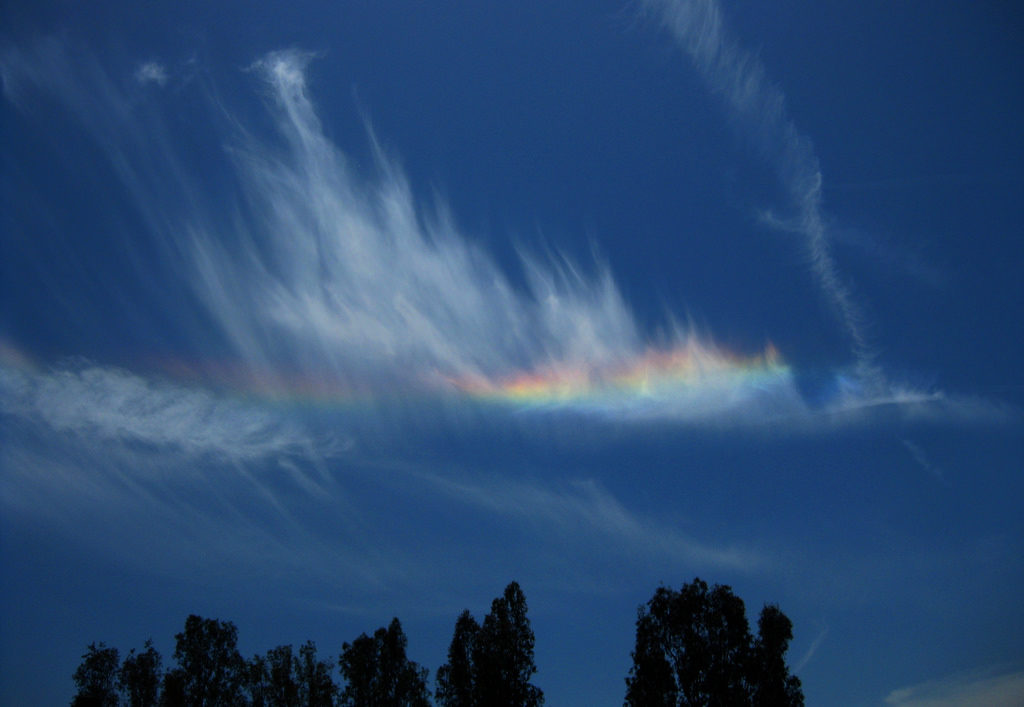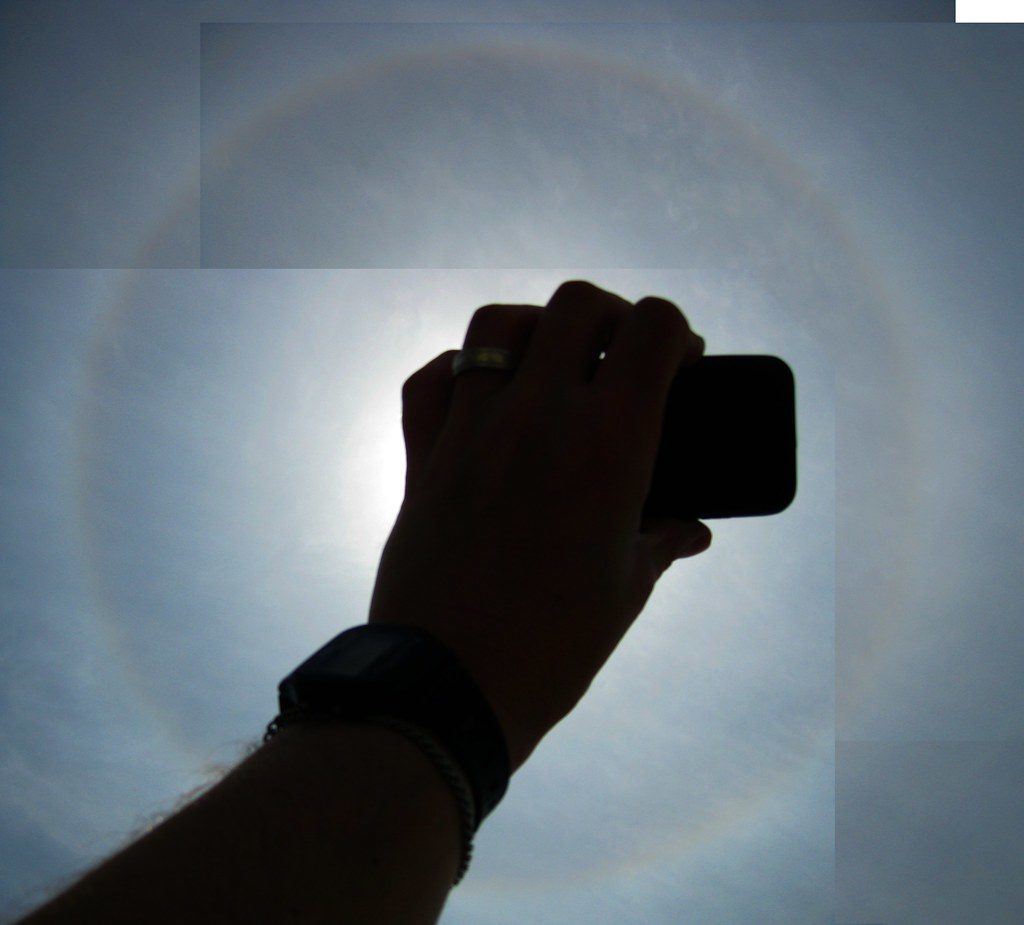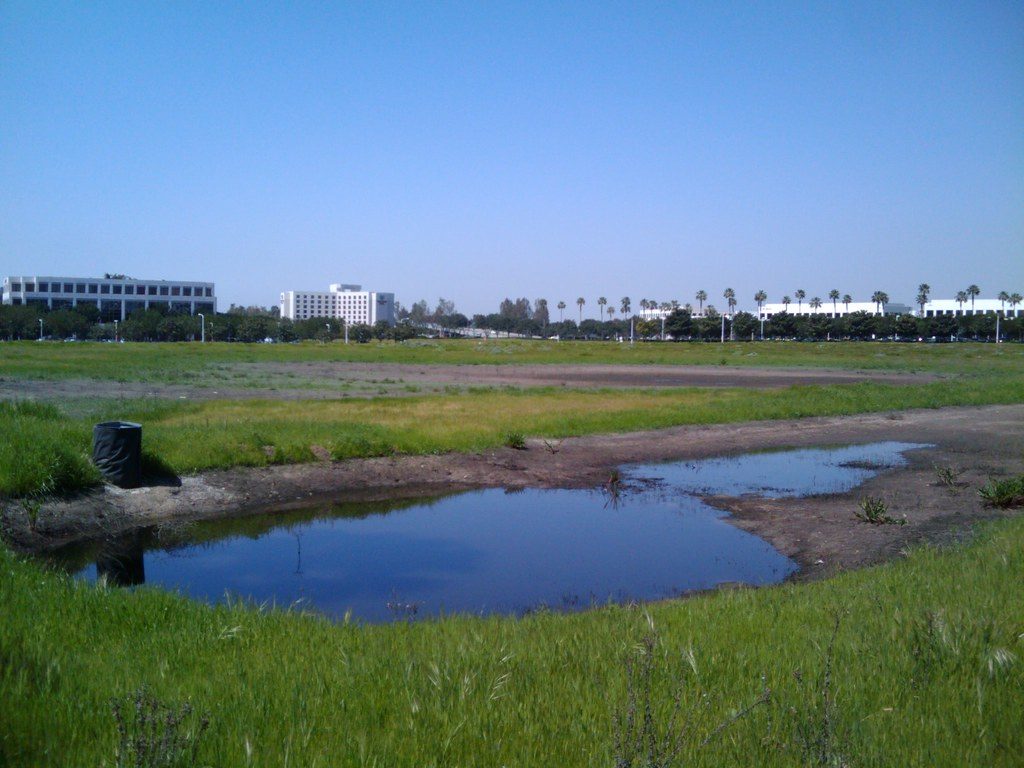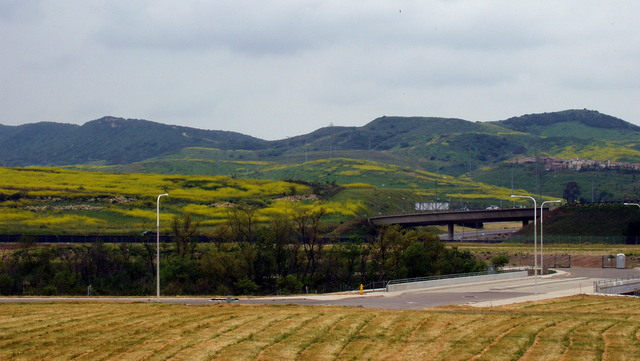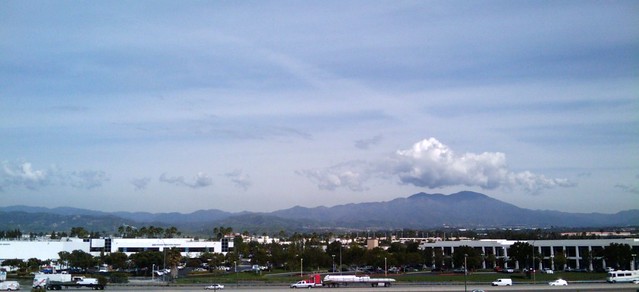I saw this amazing circumhorizon arc around 1:30 this afternoon. I had just crossed the street while walking to lunch when I looked up, saw it…and walked back to the office to get my camera!
Lesson learned: always bring the camera!*
It started out as just a couple of small segments, but as the clouds drifted into position it quickly grew, and at its strongest it was just long enough to fill the field of view on my camera. There were also a couple of fragments of a 22° circular halo visible at the time.
The whole thing had vanished by 1:50, as the clouds drifted out of alignment, though I did see a more complete circular halo later on.
It looks like a sort of straightened-out rainbow, but it’s actually caused by ice crystals. If the right type of crystals cover the entire sky, this will actually stretch in a circle all the way around the sky, parallel to the horizon.
They’re a lot less common than the 22-degree halos. I’ve seen and photographed a ton of those over just a few years, but this is maybe the second time I’ve seen something like this. Fourth if you count the two feathery fragments I’ve seen.
At times like this, I really wish I had a DSLR, but the point-and-shoot will do in a pinch.
*On the other hand, when I went back, I pointed it out to a couple of people at the office who are into photography, since it was visible through the windows on one side of the building. One of my co-workers has a digital SLR and carries it with him, so he went outside and got some great shots. If I hadn’t taken a late lunch and chosen to walk anyway and been in the habit of looking for halos and forgotten to bring my camera, chances are no one in the office would have seen it.
Update (May 17): I just discovered that there are people who think these clouds are connected to earthquakes. No, they aren’t. They’re caused by ice crystals refracting sunlight, just like most halos, and have been seen in many places that didn’t have earthquakes.
